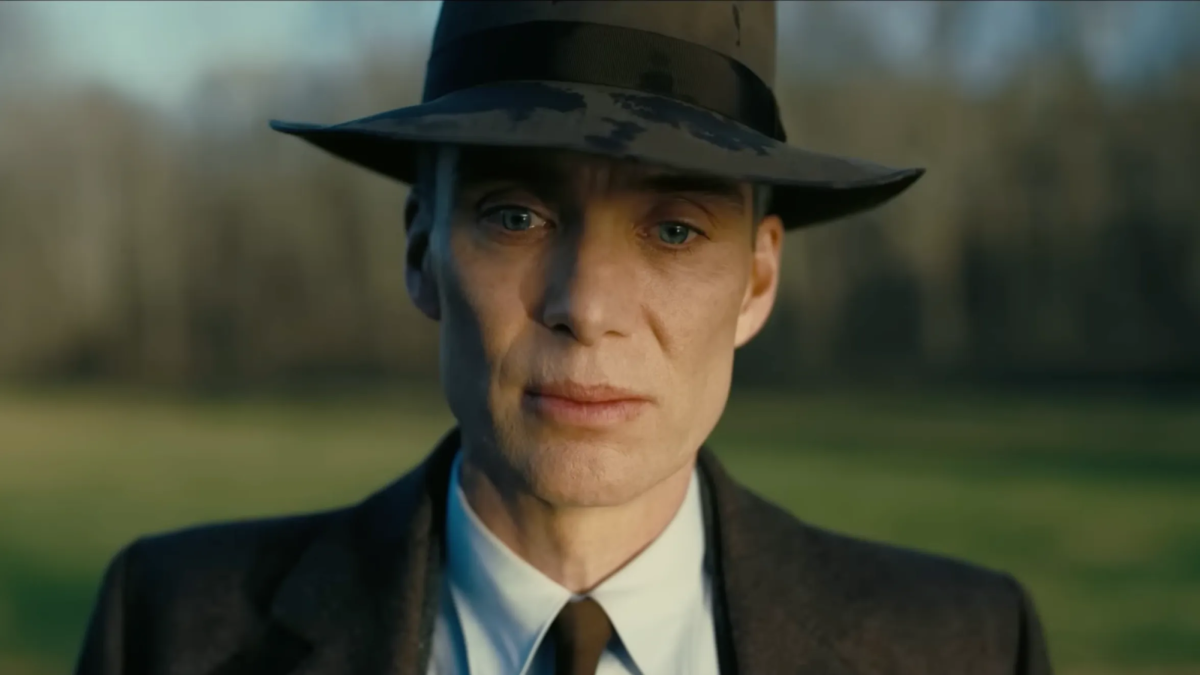“Now I am become death, destroyer of worlds,” these words, originally from the Bhagavad Gita, spoken by a god to entice a prince to war, are typically remembered today, not for their scriptural origin, but for their association with J. Robert Oppenheimer, the father of atomic weapons, and the subject of Christopher Nolan’s latest film.
Nolan, who wrote and directed the film, broke from his traditional mold of high concept action blockbusters for this film, which follows the life and legacy of the eponymous scientist.
Oppenheimer features an absolutely star-studded main cast, featuring Matt Damon, Emily Blunt, Robert Downey Jr, and Florence Pugh, to say nothing of the host of talented actors who fill out the supporting cast.
Of course, no discussion of Oppenheimer would be complete without talking about its star. Cillian Murphy, probably best known for Peaky Blinders, has been in many of Nolan’s previous films, usually in a supporting role, and it’s nice to see him finally get to take center stage. Murphy absolutely delivers as Oppenheimer, perfectly capturing the tortured brilliance of the skinny scientist.
The film doesn’t follow a linear path through the story, rather it freely switches between three sub-narratives which work together to tell the story. The main arc follows Oppenheimer and charts roughly 20 years of history, from his days at university, through to the end of the Manhattan Project. The second, also from Oppenheimer’s perspective, details the Atomic Energy Commision (AEC) security hearing where his security clearance was revoked. The third follows Lewis Strauss, a founding member of the AEC, as he attempts to become Secretary of Commerce and is questioned by the Senate about his relationship with Oppenheimer.
Whenever a film with real history as its focus is released, the inevitable question of ‘is it accurate?’ arises. Covering nearly three decades of history accurately in a three hour movie is impossible, and, like all historical films, it takes certain liberties with the actual course of events in the interest of a better story and clarity. But Oppenheimer shouldn’t be viewed as an exact historical record, but rather as a character study which tells the story from the subjective perspective of its focal character.
Oppenheimer is nearly three hours long, but it hardly feels like it, at least at first. The pacing starts out almost breakneck. Years blink by in minutes as the key characters are introduced and the story begins to unfold, but around the halfway mark, the film slows down considerably, and while it finishes big, the last quarter of the movie does tend to drag.
Oppenheimer has a unique and absolutely beautiful visual style. Nolan, and cinematographer Hoyte van Hoytema carefully constructed each shot to ensure that regardless of what’s on screen, whether it’s Oppenheimer, locked in quiet contemplation, or the fiery mushroom cloud of the Trinity test, achieved practically, without CGI, it’s going to look absolutely stunning, especially in Imax.
In keeping with the tradition of previous Nolan films, the soundtrack, composed by Ludvig Göransson, is absolutely incredible. From pensive, playful melodies highlighting the optimism of a young Oppenheimer, to sweeping, mournful pieces, following his later anguish, the soundtrack serves as a perfect guiding hand throughout the film.
Nolan’s films also have a less than stellar track record when it comes to audio mixing, with actors’ voices often drowned out by the booming score and sound effects. Oppenheimer however, remedies this issue. For the most part, all the dialogue was clear and audible. Whether this is because the situations in Oppenheimer are generally quieter than previous films, or if it’s a conscious effort on Nolan’s part remains to be seen.
Offering a beautiful and poignant look into the life of one of the most interesting figures of the 20th century, Oppenheimer is certainly one of the best films of the summer. Christopher Nolan, Cillian Murphy, and everyone involved pulled out all the stops for this movie, making it one to be remembered.








